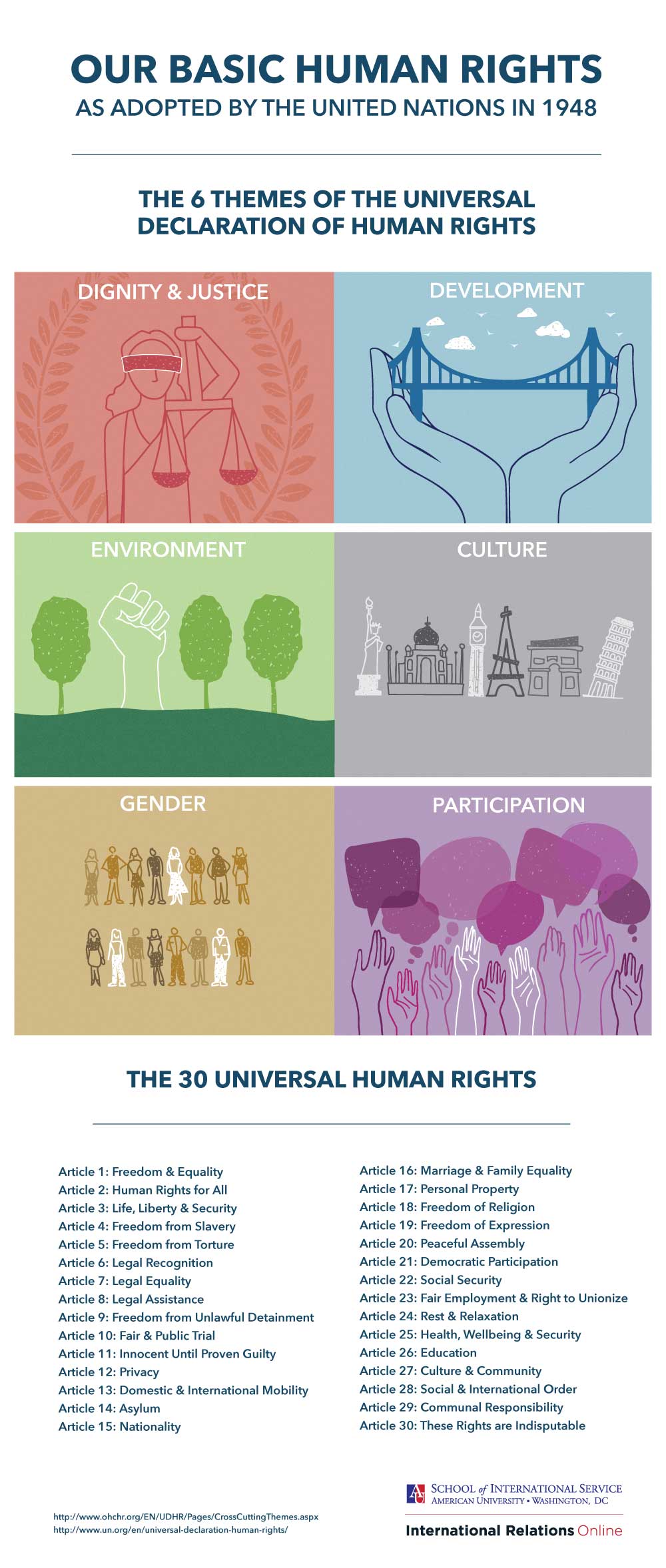In Small Places, Close to Home: The Beginnings of Universal Human Rights
Where, after all, do universal human rights begin? In small places, close to home—so close and so small that they cannot be seen on any maps of the world. Yet they are the world of the individual person; the neighborhood he lives in; the school or college he attends; the factory, farm, or office where he works. Such are the places where every man, woman, and child seeks equal justice, equal opportunity, equal dignity without discrimination. Unless these rights have meaning there, they have little meaning anywhere.
In 1946, the United Nations created the Commission on Human Rights. The commission tasked its chairperson, Eleanor Roosevelt, with considering how a world of various and often conflicting ideologies could reach a universal agreement on the fundamental rights and freedoms of people.
After two years of work, the commission’s 18 members developed the Universal Declaration of Human Rights (UDHR). More than 50 member states participated in the final drafting, and the General Assembly adopted the declaration on December 10, 1948.
Though the UDHR is not legally binding, it is considered the foundation of international human rights law. The commission designed the document’s 30 articles as basic human rights that should apply to all people, regardless of cultures and traditions, rooted in the values of nondiscrimination, equality, and fairness. In the seven decades since, the UDHR has been translated into 504 languages, making it the most translated document in the world.
However, as Eleanor Roosevelt predicted, the challenge was not necessarily drafting a declaration of basic human rights, but rather “actually living and working in our countries for freedom and justice for each human being.”
According to the U.N., the UDHR has inspired more than 80 international human rights treaties and declarations, many of which are legally binding. As of today, all U.N. member states have ratified at least one of the nine core international human rights treaties, and 80 percent of the member states have ratified four or more.
The nine core international human rights treaties are as follows:
- International Convention on the Elimination of All Forms of Racial Discrimination (1965)
- International Covenant on Civil and Political Rights (1966)
- International Covenant on Economic, Social and Cultural Rights (1966)
- Convention on the Elimination of All Forms of Discrimination against Women (1979)
- Convention against Torture and Other Cruel, Inhuman or Degrading Treatment or Punishment (1984)
- Convention of the Rights of the Child (1989)
- International Convention on the Protection of the Rights of All Migrant Workers and Members of Their Families (1990)
- International Convention for the Protection of All Persons from Enforced Disappearance (2006)
- Convention on the Rights of Persons with Disabilities (2006)
In order to promote understanding and acknowledgement of our basic human rights, IR online developed the following infographic to outline six crossing-cutting themes represented throughout the articles, as well as the 30 articles themselves.

Read the text-only version of this graphic.
When sharing our content, please cite us as “IR Online, American University’s International Relations online program.“


